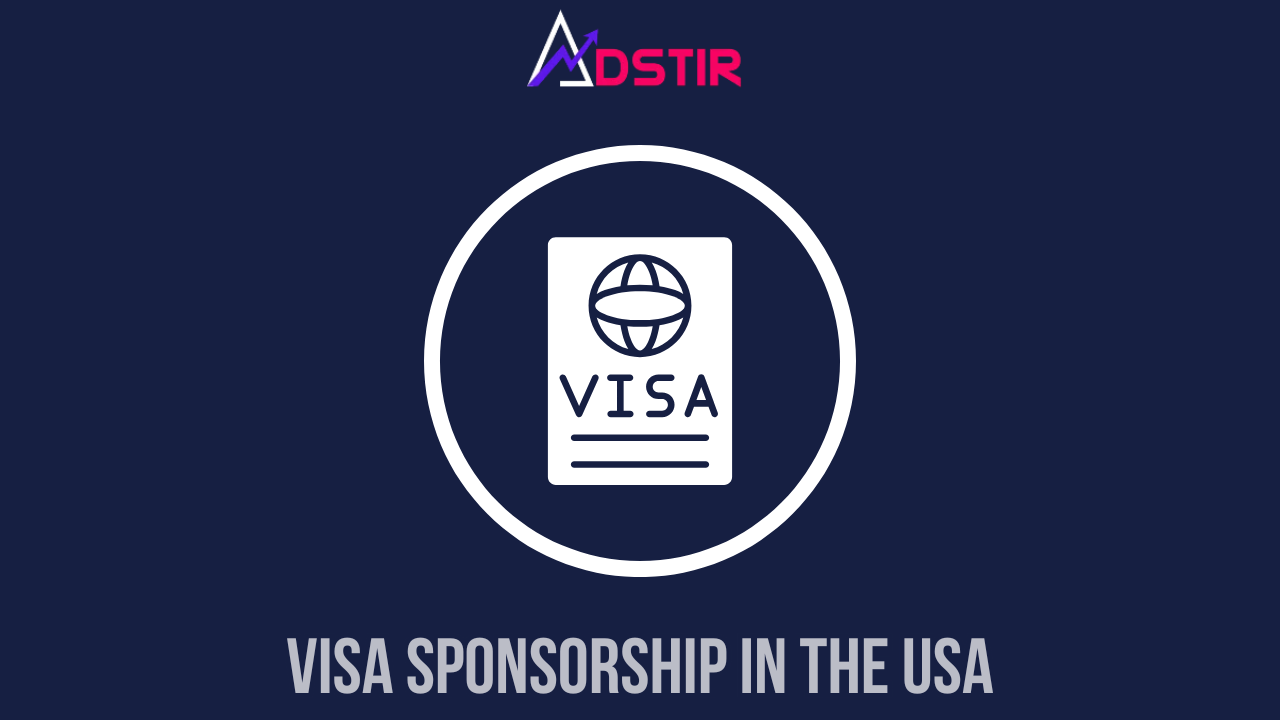Comprehensive Guide to Visa Sponsorship in the USA (2025 Edition) – The United States remains one of the top attracted states for skilled workers, students, and professionals seeking better career opportunities. However, deciding to work in U.S. requires visa sponsorship, where an employer or organization supports a foreign worker’s legal entry and employment in the country. This blog provides , Comprehensive Guide to Visa Sponsorship in the USA (2025 Edition) including types of visas, eligibility requirements, the application process, and tips on securing sponsorship.
What is Visa Sponsorship?
Visa sponsorship is when an employer or organization supports a foreign national’s application for a work or residence visa, enabling them to legally work and live in a specific country. The sponsor provides necessary documentation, proves the need for hiring a foreign worker, and often covers visa-related costs.
Types of U.S. Work Visas with Sponsorship
There are several visa categories for foreign workers seeking U.S. employment. The most common ones include:
1. H-1B Visa (Specialty Occupations)
- It is for skilled professionals in IT, engineering, finance, healthcare, and science.
- It is Valid for up to six years (firstly three years, then can be extended).
2. L-1 Visa (Intra-Company Transfers)
- It is for employees of multinational companies.
- Two subcategories:
- L-1A: For managers and executives (valid up to 7 years).
- L-1B: For employees with specialized knowledge (valid up to 5 years).
3. O-1 Visa (Individuals with Extraordinary Ability)
- For highly skilled professionals in science, arts, business, education, or athletics.
- No annual limit and it’s valid for up to three years, with one-year extensions.
4. TN Visa (For Canadians and Mexicans)
- It only Allows Canadian and Mexican professionals in specific fields (e.g., engineers, accountants, teachers) to work in the U.S.
- Valid for up to three years, renewable indefinitely.
5. EB-2 and EB-3 Green Cards (Permanent Residency)
- EB-2 Visa: For professionals with advanced degrees or exceptional ability.
- EB-3 Visa: For skilled workers, professionals, and unskilled workers with a permanent U.S. job offer. These Leads to a Green Card (permanent residency).
Application Process for Visa Sponsorship
- Step 1: Receive a Job Offer from a U.S. Employer – The employer must provide an official job offer letter, confirming the position and willingness to sponsor a visa.
- Step 2: Employer Files a Petition with USCIS – For H-1B: Employer submits Form I-129 (Petition for a Nonimmigrant Worker). For EB-2/EB-3: Employer files PERM Labor Certification with the Department of Labor (DOL).
- Step 3: Wait for Petition Approval – USCIS reviews and approves the petition. Processing time varies based on the visa type and employer location.
- Step 4: Apply for a Work Visa at a U.S. Embassy – Submit required documents (passport, job offer, USCIS approval). Attend a visa interview at a U.S. consulate.
- Step 5: Travel to the U.S. and Start Working – Once the visa is issued, the worker can enter the U.S. and begin employment.
Common Challenges and with solutions
- H-1B Visa Lottery System – The H-1B visa is highly competitive, with only 85,000 visas available annually.
- Solution: Consider alternative visas like L-1, O-1, or TN if eligible.
- Long Processing Times – Some visas take months or even years to process.
- Solution: Request premium processing (extra fee for faster results).
- Employer unwillingness – Some companies hesitate due to legal costs and paperwork.
- Solution: Highlight your unique skills and how they benefit the company.
Conclusion
Visa sponsorship is a vital crucial role for foreign workers to get employment in the U.S. While the process can be difficult, proper arrangements and research increase the opportunity of success.by following the important steps strictly a person can achieve goal of working and living in U.S. in 2025 comfortably.
Read More: How to Secure Visa-Sponsored Jobs in the US, UK, and Canada
